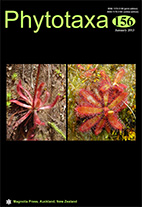Abstract
The Drosera villosa complex is here reviewed and includes six species endemic to Brazil: D. villosa, here identified for the first time as a narrow endemic species native to the neighboring highlands of the Serra Negra and Serra do Ibitipoca, in southern Minas Gerais state; D. ascendens, rediscovered nearly 200 years after its description, narrowly endemic to the Diamantina Plateau, central Minas Gerais; D. graomogolensis, endemic to northern Minas Gerais, but here found to be more widespread than previously reported; D. latifolia, a highly polymorphic and widespread taxon, previously placed in synonymy of D. villosa and heretofore misidentified as D. ascendens, is here elevated to species rank; and two new species here described, D. riparia and D. chimaera. Furthermore, two new natural hybrids are reported: D. villosa × D. tomentosa var. glabrata and D. latifolia × D. tomentosa. The morphological characters distinguishing these taxa from each other and from similar species are discussed, together with habitat and ecological information, detailed illustrations and photographs, distribution maps, and a key to the species of the D. villosa complex is provided.

